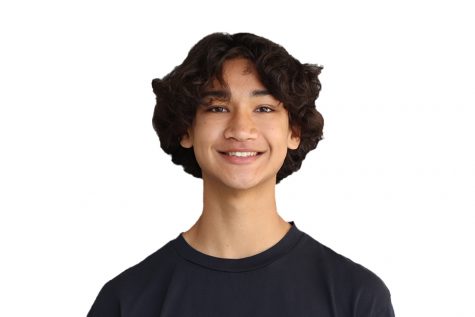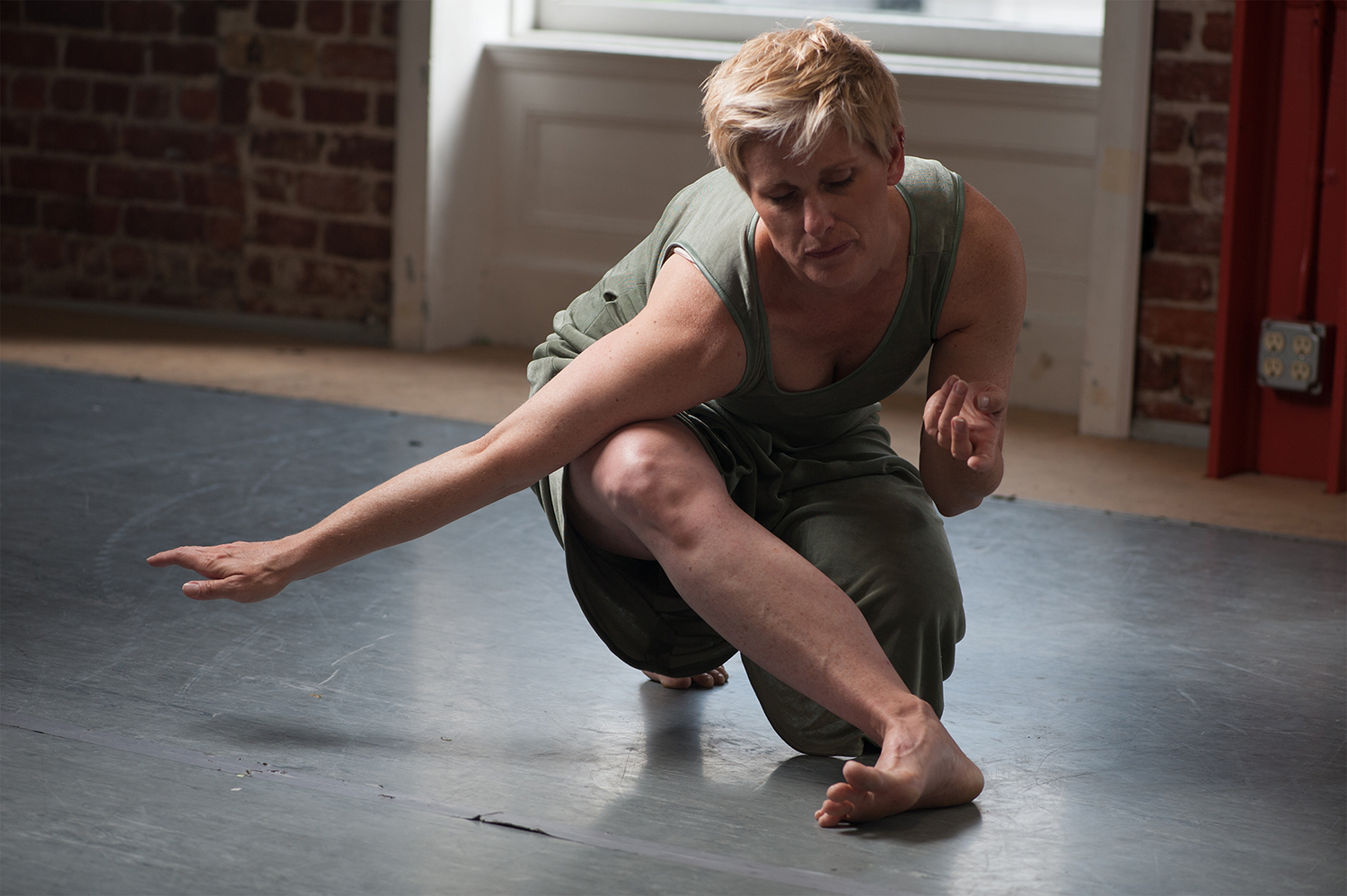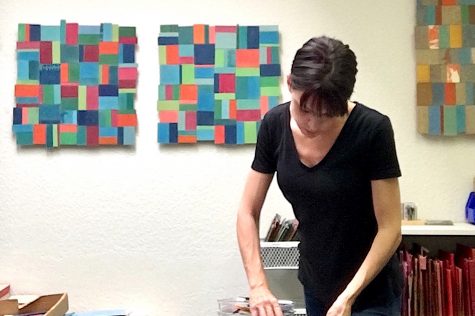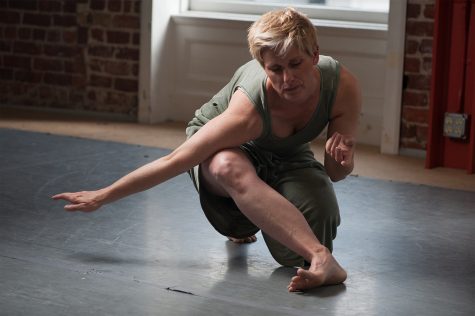
Twitter: @SamuelH99045330

Twitter - @EthanKam8


May 19, 2022
“Others have seen what is and asked why. I have seen what could be and asked why not,” said painter Pablo Picasso.
Like Picasso articulated, artists use their work to push boundaries and explore new ideas rather than tenaciously pursuing answers to the physical world. They constantly reach into a vault of experiences, emotions, questions, or conflicts and come back with songs, collages, dances, or other forms of creation.
Although many take its presence for granted, creative expression provides an opportunity for artists to express their inner thoughts and emotions, take a break from the typical rush of life, and explore the relationship between who they are and the world around them. In addition to this, art allows people to form connections with others through their shared passion.
Some believe art serves the sole purpose of looking or sounding appealing, but it can have deeper meaning rooted in the artist’s experiences and thoughts. Not only are artists influenced by their past encounters, but the process of making art also leads them to new ideas or feelings.
In the modern age, expression can take many forms. This may include photographing events or people that are important to you. Perhaps it’s something more simple, like scribbling on a blank piece of paper whenever feeling frustrated or angry. Either way, each of these methods serves as a way to understand yourself better.
“Why do I only take portrait photos, or why do I always find myself scribbling when I’m angry?” you might think.
For Lina Saleh, a sophomore at Carlmont, singing and songwriting are her ways of expressing herself, telling stories, drawing inspiration from the everyday things around her, and better understanding herself in the process.
“I’ve had some really silly courses of inspiration: fictional characters and situations such as ‘What if I entered myself into this universe? Or my friends?’ I feel like inspiration – and this is going to sound super cheesy – is everywhere you go,” Saleh said.
For Saleh, almost every song has a different inspiration coming from what emotion she may be feeling at the moment or the people and events that come into her life.
“If I’m angry about something, nine times out of ten, I’ll get angry at the song and leave it halfway. But I think that it is also a testament, channeling my emotions at the song. And that one time out of ten, [the song] sounds pretty angry,” Saleh said.
Music can also make changes within the brain and provide psychological benefits. A study done by the US National Library of Medicine National Institutes of Health studied 60 patients who experienced anxiety and depression from cancer. Listening to just 20 minutes of music a day over three days showed a dramatic decrease in anxiety and depression amongst the randomly chosen group of individuals.
Not only do studies show music, occasionally referred to as the language of the soul, decreases depression and anxiety, but it can also be used to express emotions that words alone might not be able to convey.
“Songwriting is definitely a form of catharsis. I mean, it goes a lot of different ways. I feel as a writer, you not only get a chance to channel what you’re feeling, but you’ve tried to understand the world around you, and the worlds and universes that could be happening around you,” Saleh said.
In addition to being used to convey emotions, art-making can also change feelings or make an individual less stressed. According to the US National Library of Medicine National Institutes of Health, cortisol levels decreased by 17% following art-making, signaling a decrease in stress.
Similar to how one may blow off steam by doing physical activity, Saleh often turns to music-making when challenges arise in her life.
“Sometimes, if I don’t understand what’s going on in life, I’ll sit down and write. Sometimes it’s a song, and sometimes it turns into a journal entry. Not being afraid to share how you feel [and] not being a secret anymore, I feel [is] important,” Saleh said.
For Saleh, making music isn’t only a hobby but is a passion that helps her better understand herself. She is open to the challenges that may arise when making music and takes these challenges as opportunities to improve herself and her music-making.
“It’s so aggravating sometimes, [when] you’re trying to write about how you feel, or how you want others to feel about this particular situation, but you’re also trying to do it in a catchy way [and] in a way that fits a certain syllable count, [uses] the right words, or [uses] a cool melody,” Saleh said.
Even though these challenges present setbacks for Saleh, she realizes the importance music brings to her life. Music helps Saleh learn to let go of what other people may think.
“Songwriting is basically reading your diary to the world. And that can be really scary. But it can also be really liberating,” Saleh said.
What if I fail? That would be so embarrassing.
What if they don’t like me? Maybe I shouldn’t do it.
These thoughts are common to many people when exploring a new interest or exposing themselves to the opinions of the public. Being vulnerable to the criticism of others is a feeling that is all too familiar to artists, as their art still holds a piece of them in it. Artists can overcome this fear of critique, however, and they might find themself focused solely on their work, shutting out other distractions and forgetting about the world.
Kerith Lisi, a mixed media artist, describes the process of making art as an escape from reality.
“I’m just so in the zone. It’s as close to meditation as I’ll ever get, and everything else fades away. It’s calming. It’s like a place I go. Nothing like this has me unaware of the time that is passing by,” Lisi said.
This phenomenon described by Lisi, commonly known as the flow state, enables her to focus on her art and not worry about anything else happening around her.
Lisi also emphasizes the importance of exchanging ideas with other artists to find meaning in the things they love to do. Some think art must convey an all-important message or tell a heartfelt story. And while many times art does do this, the motive for creating can sometimes be straightforward.
“I’m part of a critique group [and] one of our assignments asked was, ‘Why do you do what you do?’ And all of our answers were pretty much, ‘I would be a miserable person if I didn’t.’ And I feel like that is my answer,” Lisi said.
Art has always been on Lisi’s mind, but the daily responsibilities of supporting her family kept her away from doing the thing she loves.
“I thought about doing [art] as a major in college, but then I thought there was no way that I’d be able to make a living. It didn’t seem practical. I did actually go back to school after I quit working for a little bit and decided I [was] going to do graphic design to go into the Academy of Art. And I stopped again because it was like, ‘Wait, how am I going to be a mom and do this when all the jobs are internships?'” Lisi said.

However, Lisi realized that art was something she cared about and decided to pursue a career that included this passion.
“And then I got to age 40, and I just realized if I am to ever do this, it should be now. And that gave me the ability to not care about what other people thought. So then I’m just like, ‘Who cares, I’m just gonna do it.’ But then I realized I didn’t necessarily need to get paid. I just wanted to do it,” Lisi said.
But at any age, negative criticism can often hold an artist back. Lisi has learned to overcome this fear of judgment in order to create art that satisfies her.
“[I] just realized it’s still worth it. The worst criticisms just can’t matter,” Lisi said. “I don’t think anybody would ever do it if that was the case. I just had to think [that] 5% of the people out there might really get what I do. And [for] the other people, it’s just not for them.”
According to Lisi, learning not to care what other people think is an essential part of being an artist. People will not always view art the same way, and criticism will likely arise.
“I was walking by, and [someone] was talking to a friend about a piece of mine, and they were like, ‘That does nothing for me.’ I had to stop and think, ‘Okay, not my audience.’ It was also a relief because that was the worst thing I could have feared. And I was fine with it,” Lisi said.
With the rise of modern and contemporary art, more abstract ideas can sometimes lead viewers to critique or dismiss art forms that are more simple or experimental.
“[Some say],’ I could do that.’ But I think that’s lazy thinking because this person actually did it. Why did they do it? What were they trying to say? Maybe they were not trying to say anything,” Lisi said. “I think people get stuck in [thinking], ‘It has to look this way. It has to be a painting in order to be art.’ So it is just an invitation to consider what art is.”
Many people have been asked why they do something one time or another. Artists contemplate this prompt often, as the monetary incentive idolized by society is absent in their craft. After spending time grasping for a profound or revolutionary response that satisfies others, one could find themselves drawing a blank. Although deeper aspects of the passion may exist, the answer to this question can also be simple.
“[Dance] is the best way I know to be in the world,” said Mary Carbonara.
Carbonara has been teaching dance since 1991. Although part of her attraction to the art form comes from the movement and connection within her own body, she also finds a unique appeal to the relationship between her and others who share her passion. Being a dance teacher allows her to explore a balance of the two while teaching and learning from others.
“I’m just not comfortable in my skin unless I’m moving a certain amount. I’m not comfortable in my skin unless I’m having a meaningful interaction with someone over something that I care about. That’s what teaching [dance] is for me,” Carbonara said. “It’s as logical to me as knowing that if I don’t get to bed by 10 o’clock at night, I’m going to feel miserable in the morning.”
Although Carbonara feels such a strong attachment to her art, society still presents challenges that she has to overcome.
“Dance is horrendously underpaid compared to more white-collar work,” Carbonara said.
She believes, however, that it is worth the sacrifice of financial satisfaction in favor of the self-benefit she receives from dance.
“I know that for the brief period where I was only working in the office, as much as it had its own rewards, I was deeply unhappy; probably clinically depressed. [I was] feeling like I was very out of place. It took a while, but over the years, I’ve figured out how to create that balance,” Carbonara said. “I teach, so I’m in the studio, frequently watching teachers, teaching teachers, and then teaching my own students. I’m also at a desk a lot, scheduling, fundraising, and emailing.”
Across her 30 years of teaching dance, Carbonara has experienced many different forms of the craft. She has danced on the hard studio floors and the uneven concrete of Golden Gate Park. She has been a student and a teacher of dance to children and adults.
“I had my own dance company for a while, and teaching [was] all I was doing. It was all physical. I was teaching all over the Bay Area, and I was choreographing and presenting my work. It was a 24/7 movement. And it was glorious, wonderful, exhausting, hard, and poorly paid. I feel like I’ve gone through a couple of different lives when it comes to dance and how it’s shaped me,” Carbonara said.
Carbonara has taught in many different environments and dances for hours a day, allowing her to thoroughly explore the sensation felt from the art form.

“I [dance] because of how it makes me feel physically and how it makes me feel connected. It makes my brain, body, and nervous system feel connected,” Carbonara said. “When I’m dancing, the first thing I experience when I start moving is my sense of stability and strength. And then after that, the next thing I experience is my range of motion. I know when I feel solid, and then I know when I can reach off that solid ground. And it’s when both of those things connect [that] I feel like I can start moving expressively.”
According to Harvard Medical School different regions of the brain are activated when one dances. This includes the motor cortex, somatosensory cortex, basal ganglia, and cerebellum, each controlling and coordinating a different part of the body.
Dance can also be used to help navigate difficult situations in life and oneself. The art form encourages one to think more deeply about their relationship with the world and can provide a new sense of comfort or understanding.
“I’m not necessarily trying to convince you of anything when I [choreograph] dances. For example, one of the early pieces I made was a piece called Deflecting Faith. I was raised in a religious household, but I myself never felt connected to religion. And I found myself sometimes worrying about that. Sometimes, [I was] embracing my religion, and sometimes [I was] consciously deciding not to think about it. I would just put it aside,” Carbonara said. “And so I decided to make a piece about how it feels to put it aside. What does it mean when that sensation, those thoughts, the beliefs, [and] the questions are really close at hand, but you’ve chosen not to go into them? [It] kind of calmed me down about feeling conflicted.”
Although some believe that dancing is purely for show, Carbonara believes the lessons learned along the way are just as, if not more, important. Dance brings a whole new experience and can expose people to new discoveries about themselves and their relationship with the world around them.
“You want [the students] to understand how to try things and how to experience different things. You might be teaching a kid how to do turns because you want them to be able to master a pirouette like a ballerina. But you also want them to do turns so that they can experience the wild and chaotic joy of being dizzy and then suddenly not being dizzy again. You want them to be able to master their balance even when they can’t see where they are. It’s always about those other lessons, as far as I’m concerned. It’s a way of processing the world,” Carbonara said.
Carbonara values the relationships she has with her students, and she also emphasizes the unique energy and attitude young people bring to dance.
“I [remember I] was a teenager. I was 13 to 16. And my experience of those years is that you change a lot every year. You become a little bit more clear about what you like, what you don’t like, how you think, what you want to say, how you want to share things about yourself, and how you see the world. And so I think for a teacher to work with a student for that period of time, you can witness a lot of transformation,” Carbonara said. “If a child begins to dance, they can get adults to dance, and that’s a really lovely, beautiful thing to see. I think young people dance with music when [they’re] feeling silly and goofy, lazy, or creative. I think with little kids, it is just natural and intuitive.”
Despite Carbonara being the dance teacher, she is still able to learn from her students every time she teaches. After spreading her passion for the art form to new people, Carbonara enjoys finding something in return.
“That’s another reason that I teach: it’s the best front-row seat you could possibly buy. You get to see people performing, trying things, wiping out sometimes, doing something they never thought they could do, [or] doing something twice as well as they ever could have imagined,” Carbonara said. “In class and the safe environment of the studio, you can watch people learn, watch people surprise themselves, and watch people entertain each other. It is absolutely one of the best ways to see dance, in my opinion. After I finish teaching, I just sit, and I watch.”

